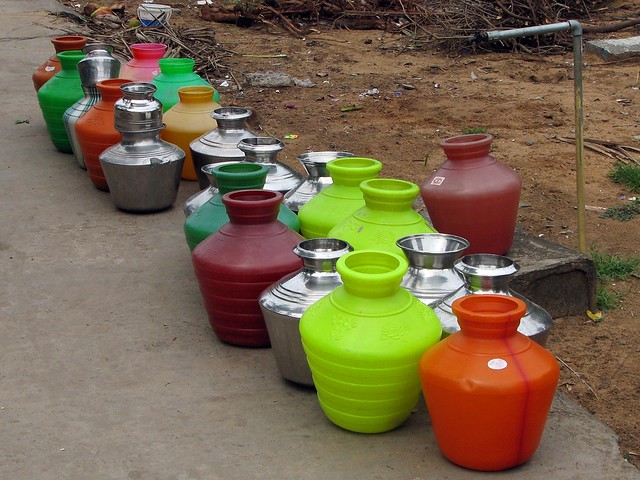MUMBAI – Businesses and schools have come to a halt in parts of Mumbai as its 18.4 million residents endure the city’s second-highest rainfall in 45 years. The town expects, but is ill-equipped to handle, heavy rain during the monsoon season. The flooding in Mumbai, however, is not the water crisis the subcontinent faces.

Nearly 600 million people in parts of India, particularly the areas around Chennai and Bengaluru, are facing an acute shortage of groundwater due to prolonged drought. Experts have little hope that matters will improve. A 2018 report predicts that “By 2030, the country’s water demand is projected to be twice the available supply.” As many as 21 major cities, including Bengaluru, are expected to entirely run out of water by 2020, which is less than six months away.
The four Cauvery basin dams that service Bengaluru do not have enough water to supply residents past the end of July. The government recently proposed a five-year ban on the construction of new apartments in Bengaluru until there is a surety that it will be able to deliver water to newly added units.
Currently, only 22,000 of the 75,000 apartments in Bengaluru are supplied with water from the Bangalore Water Supply and Sewerage Board.
The state of Tamil Nadu has been delivering water to Chennai residents from outlying sources via a fleet of 900 water tankers. Doctors in Chennai medical clinics and hospitals have also become dependent on water tankers because no water is being delivered through the piped water systems.
Hospital chairman, T.N. Ravisankar, explained that “If the situation continues, after a month we won’t be able to serve patients.” He added that “Treating patients will depend on God’s mercy.”
There is a growing concern that the water tankers will have to travel more than 100 kilometers to retrieve water in the near future. The distance will make the delivered water more costly. That does not account for the ancillary effect of increased demand versus a diminishing supply.
Each passing day exacerbates the crisis. Usage could soon be limited to drinking water. That means limitations on agricultural and business use, thus suppressing the output of farms and factories. Severely diminished rainfall over the past several years has already contributed to a 2.5% loss of GDP for the country. Some predict that India could lose an additional 6.0% in GDP.
Right now, the conditions and prospects are so bleak that no reasonable amount of containable rainfall can replenish the groundwater supply in time to altogether avert an ongoing crisis.
The hospital administrator is correct. The end of this crisis may depend solely upon God’s mercy. Please pray with us for the precious people of India who are already suffering and for those who will suffer if the Lord Jesus Christ does not miraculously intervene.
To read more news on India Water Crisis on Missions Box, go here.
Sources:
- India Times, With No Signs Of Rain, Bengaluru May Face Chennai-Like Water Crisis Soon
- Live Mint, Chennai water crisis is forcing doctors to buy water for surgery
- The Diplomat, Southern India Grapples With Acute Water Shortage
- The Diplomat, India’s Local Water Conflicts Are a Looming Threat
- The Independent, India’s ‘worst water crisis in its history’ is only going to get worse, government think tank says
- India Times, In The Next 2 Years, Bengaluru Might Officially Run Out Of Water And It Is A Matter Of Concern
Image Source:
- McKay Savage, Flickr
Other Articles on the Water Crisis Worldwide:
- Gospel for Asia, The Global Clean Water Crisis
- Gospel for Asia, Dying of Thirst
For more information about this, click here.




